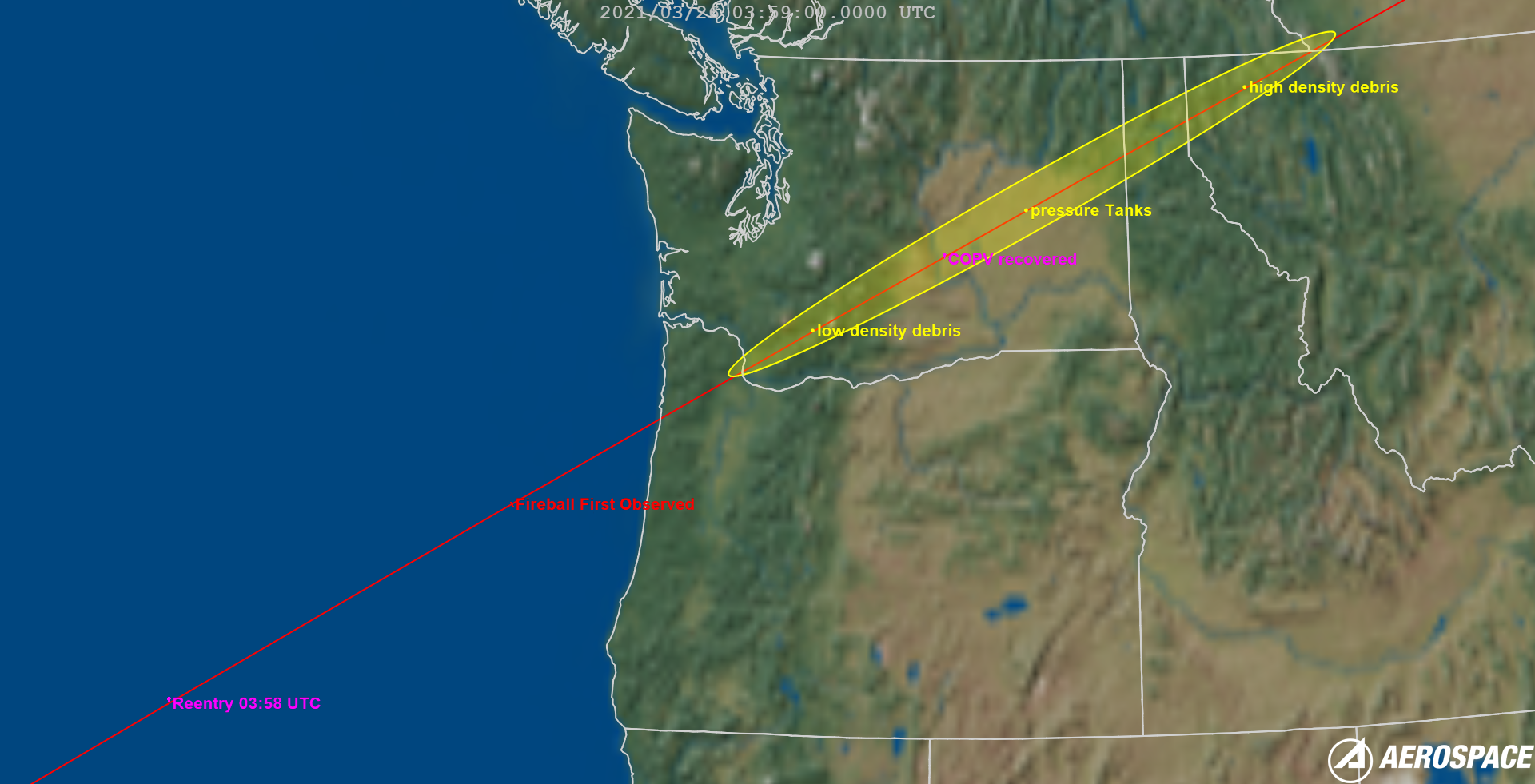|
Reentry Prediction
|
|
|---|---|
| Predicted Reentry Time | 26 Mar 2021 05:49 UTC ± 2 hours |
| Orbit Epoch |
|
|
Prediction Ground Track
Yellow Icon – location of object at predicted reentry time |
|
Reentry Sighting
Recovered Debris
Aerospace had done some preliminary modeling of the Falcon 9 second stage breakup, and had been preparing an estimated debris footprint graphic for publication, when actual debris was located in Grant County, Washington state [1, 2, 3].
The graphics below depict our modeled trajectory for typical elements of breakup debris from an upper stage. This is a generic model that predicts typical debris from such a reentry. Exact details are highly dependent on the exact point of breakup, and the structural details of the reentering object.


DISCLAIMER: Aerospace is NOT encouraging an active search for debris. Obey all applicable laws and private property rights, and do NOT trespass or violate any property access restrictions
|
Object Description
|
|
|---|---|
| Reentry Type |
Rocket Body
|
| Int'l Designation | 2021-017BN |
| NORAD Number |
47782
|
| Launched | 04 March 2021 @ 08:24 UTC |
| Launch Site | |
| Mission | Starlink Launch 17 |


